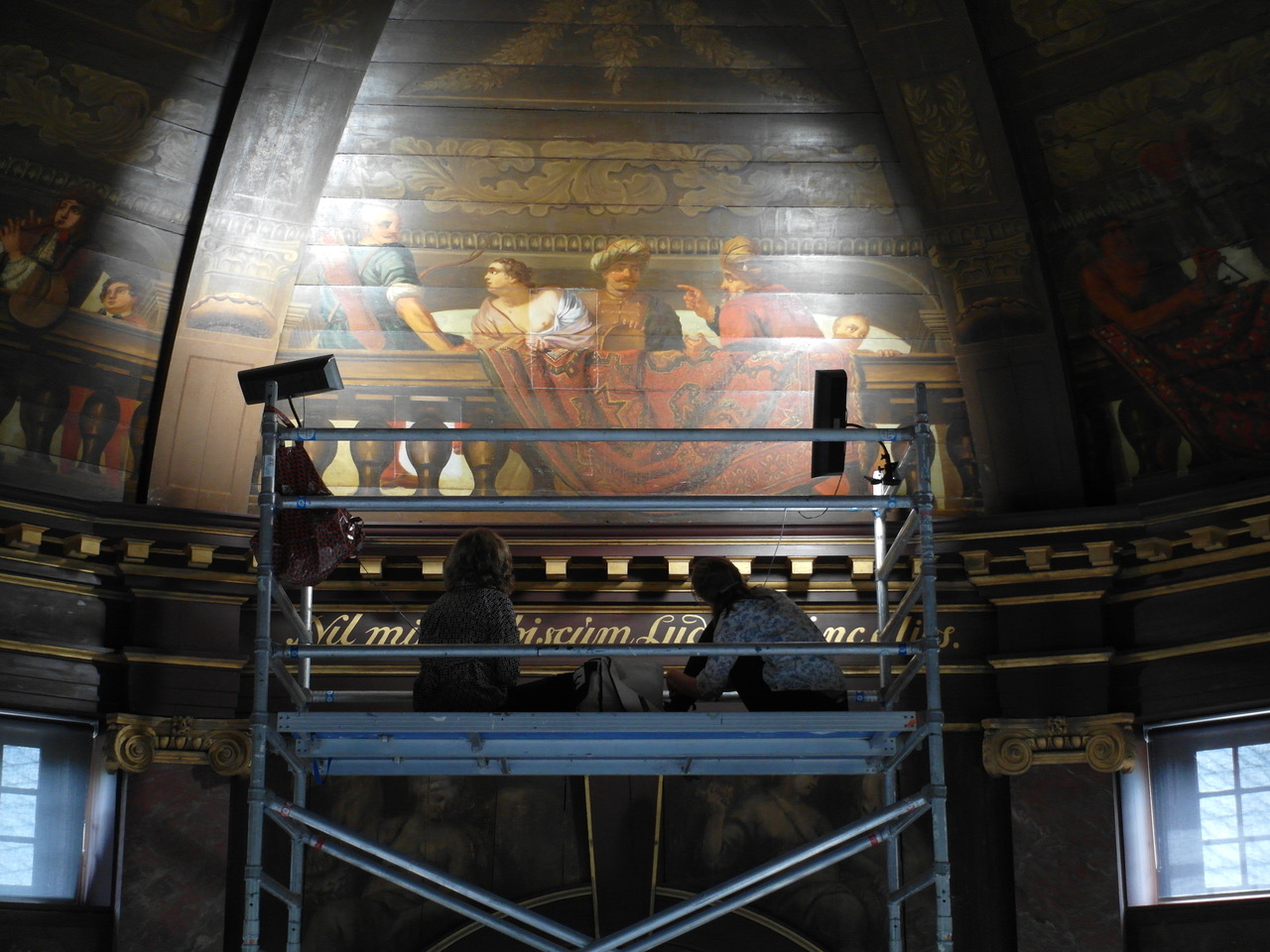Restauratie van Trompenburgh
Monumentenbezit werkt hard aan de restauratie van Buitenplaats Trompenburgh. We delen graag nieuwe updates van de restauratie van dit unieke monument.
We hebben de restauratie van Buitenplaats Trompenburgh grofweg in vier onderdelen opgesplitst: de restauratie van het gebouw, de verduurzaming van het gebouw, de renovatie van de tuin en de openstelling voor het publiek. Op deze pagina delen we updates van twee van de onderdelen via korte video’s. In de eerste video deelt projectleider Robin Koot onze aanpak voor het verduurzamen van het gebouw. Dat was een belangrijke, maar complexe opgave voor dit monumentale pand. Restaurator Annefloor Schlotter vertelt in de tweede, nieuwste video over de ontdekkingen die zij en het restauratieteam hebben gedaan bij het restaureren van de koepelzaal. Eerder had het team ook al bijzondere vondsten gedaan.
Verduurzaming van het gebouw
Monumentenbezit heeft intensief gewerkt aan de verduurzaming van het gebouw. We hebben zowel low-tech als high-tech verduurzamingsmaatregelen toegepast. Bij low-tech denk je aan bijvoorbeeld het aanbrengen van kierdichting, isolatie van vloeren en het installeren van waterbesparende kranen. Deze maatregelen zijn het afgelopen jaar uitgevoerd. Daarnaast zijn er grootschalige, high-tech oplossingen toegepast. Zo wordt de koepelzaal nu verwarmd via vloerverwarming, gevoed door een warmtepomp die vorig jaar is geïnstalleerd.
Het duurzamer maken van een monument gaat ook om het kiezen van materiaal dat langer meegaat. Daarom is er bij het vervangen van de loodbedekkingen op het dak gekozen om voor een andere aanpak. De nieuwe loodbedekking is geventileerd aangebracht, waardoor het lood veel langer mee kan gaan.
Zodra alle maatregelen zijn uitgevoerd, gaat Trompenburgh van energielabel G naar label F. Hoewel dit een kleine stap lijkt, betekent dit een verbetering van de energie-index met maar liefst 27% en een CO2-reductie van 45%!
Restauratie van het koepelgewelf
Een team van 20 restauratoren, onder leiding van Ruth Jongsma van het Bureau voor Kleurenonderzoek & Restauratie, werkt momenteel aan het restaureren van het koepelgewelf. In de afgelopen maanden hebben ze een bijzondere ontdekking gedaan…
Het oorspronkelijke plan uit 2019 voor de restauratie van het koepelgewelf omvatte het verwijderen van de oude, vergeelde vernislagen, het consolideren, vullen en retoucheren van de schilderingen, evenals het aanbrengen van een nieuwe vernislaag. In 2020 bleek uit vooronderzoek dat er mogelijk een intacte 17e-eeuwse schildering onder de bruine laag verborgen zit.
“Daarom zijn we bij de huidige restauratie begonnen met het maken van een testvlak in een van de gewelfsegmenten. We hebben alle overschilderingen verwijderd. Toen werden er originele, subtiele details weer zichtbaar en kreeg de geschilderde architectuur ineens meer diepte. De koepelzaal komt daardoor weer tot leven,” vertelt restaurator Annefloor Schlotter. In deze video licht ze de aanpak en ontdekkingen verder toe.
Planning
In 2020 zijn we gestart met de restauratie van Buitenplaats Trompenburgh. In 2025 beginnen we met de werkzaamheden rondom de tuin. De tuinstructuur rond het huis wordt hersteld. Aangezien het huis oorspronkelijk meer omgeven was door water dan nu het geval is, zal een deel worden uitgegraven en opnieuw met water gevuld worden. Daarnaast wordt een houten toegangsbrug geplaatst, zoals deze er in de 17de eeuw uitzag.
De werkzaamheden aan de tuin zijn naar verwachting in 2026 afgerond. Als ook de restauratie van het interieur grotendeels gereed is, wordt de buitenplaats toegankelijk voor publiek. Het gebouw krijgt vanaf dan een cultureel-maatschappelijke invulling en wordt beschikbaar gesteld voor verhuur, evenementen en ontvangsten.





